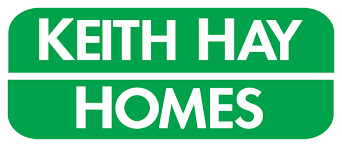Early this month, Tenancy Services released new versions of its bond forms. We have a quick chat with Allan Galloway, MBIE National Manager of Dispute
Resolution about the new forms, how they improve on the bond process, common bond related mistakes and how to avoid them.
Q: Tenancy Services recently revised its various bond forms. Are the new forms intended to improve the internal
processing or bonds?
A: Tenancy Services has updated its bond forms to make it easier for both landlords and tenants to complete
them. The lodgement and refund forms are now one page, to help users print and submit them, and extra detail has been added to the forms so we get
all the right information the first time, reducing the need to go back to the submitter as often. Tenancy Services encourages property investors and
landlords to update to the new bond forms.
Q: What are the different forms available under the latest revision?
Additional tenants bond lodgement form
Additional tenants bond refund form
Q: Are the old forms going to be phased out any time soon?
A: The old forms will still be accepted, however, we are encouraging everyone to change
to the new forms as they are much easier to use and will help us get all the right information the first time, so we don’t need to come back to you
as often.
Q: What is the deadline for lodging bond payments?
A: Section 19 of The Residential Tenancies Act 1986 outlines the duties of landlords on receipt of the bond
Information regarding bonds can also be found on our website.
Q: What are the common (paper-work related) mistakes landlords make while filling out
bond forms that can complicate bond processing?
A: Entering incorrect data – such as Property ID, Landlord ID, or bond
number
Entering incomplete data – for example, incomplete Landlord ID/Property ID, Landlord ID’s that relate to Old Landlord’s, missing information such as name/address/address
for service details
Entering unclear/illegible data/information (unclear handwriting)
Missing signatures – everyone needs to sign the form they’re completing, otherwise, there might be delays.
Q: What is the Tenancy Bond Services’ process to digitise and store the information collected
by various bond forms once they are received?
A: Tenancy Bond Services uses the Bond2000 system to manage bond records. Any emails,
forms, communications or other documents that relate to a bond record are scanned and the images are linked to the bond record in Bond2000. Tenancy
Bond Officers view the scanned images from within Bond2000 and transcribe any data from the image into the bond record.
Original paper documents are archived in a secure facility. Original emails are stored within the MBIE secure network.
Q: Is there one or more unique identifier(s) for every single bond lodged?
A: Bond number – relates to the bond on that property
Property ID number – is a unique number given to each tenancy address and is used to speed up the processing of bond forms. Please ensure that the tenancy
address and Property ID are entered together
Landlord ID Number – your unique Landlord ID directly relates to the properties and bonds we have in our system linked to your name. It is important that
the landlord name and Landlord ID are both entered.
Q: What should landlords do if they cannot track down bonds they lodged which they no
longer have the paperwork of?
A: If you have questions or want more information about bonds, you can Freephone the Tenancy
Bonds Services team on 0800 737 666 or visit our website.
Have you changed over to the new bond forms?














Add Comment